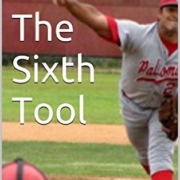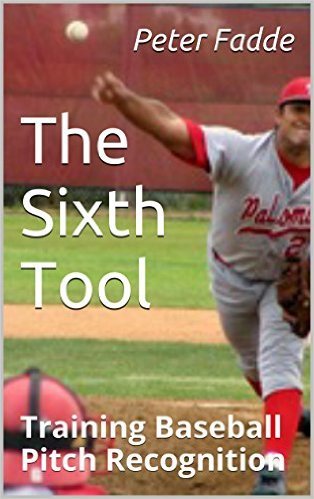A Simple Way To Train Pitch Recognition That Works For Collegiate & Pro Hitters
Dr. Peter Fadde applies sports science to batting drills focusing on pitch recognition. He’s a Professor in Learning Systems Design & Technology at Southern Illinois University.
CLICK HERE for a great case study featured in the Baseball Collegiate Newspaper titled, “Pitch Recognition Can Be Done By Hitters”, where Dr. Peter Fadde was asked to consult with Southeast Missouri State hitting coach Dillon Lawson on the subject of pitch recognition with his hitters, in March of 2014.
I heard about Dr. Peter Fadde through a few of my readers who saw him speak at the 2015 ABCA conference (ABCA “Doing Damage at the Plate by Training Pitch Recognition” video above).
Since, I’ve read his ebook “The 6th Tool: Training Baseball Pitch Recognition” in less than an hour, corresponded with him via email, and felt it a MUST to put together an interview with him sharing his insights with you.
(NOTE: if you purchase his ebook, and after reading it you like what he has to say, PLEASE leave him a review on Amazon.)
You can see the presentations he’s done, recognition he’s earned, and his current work at his website:
Here are some other places you can find him online:
- Twitter: @DrFadde
- Linkedin: https://www.linkedin.com/in/peter-fadde-6022a04
- YouTube
- Video Occlusion Pitch Recognition Software: http://www.gamesensesports.com/
By the way, the pitch recognition hitting drills that Dr. Peter Fadde proposes in The 6th Tool book link above, work well with both baseball and softball hitters at ALL levels, not just at the collegiate and pro levels.
Also, Dr. Peter Fadde is one of the experts in the area of vision, tracking, and timing that has contributed videos to the Reaction Time Mastery online video course.
Without further adieu, here’s the interview… (rhyme intended 😉 )
What are some great drills to practice vision/tracking?

Dr. Peter Fadde meet my readers, readers meet Dr. Peter Fadde 🙂
What I focus on for Pitch Recognition (PR) is separate from vision skills (peripheral vision, dynamic tracking acuity) and tracking.
Sports science calls it a “perceptual-cognitive” skill, meaning that it is vision-based but a mental skill. It’s picking up cues in the pitcher’s wind-up, release, and the first 10-20 feet of ball flight. By picking up advance cues, expert hitters anticipate pitch movement earlier.
The best drill for practicing PR is Bullpen Stand-In Drill. Batters have been standing in forever. The difference here is the batter needs to call out loud “Yes” or “No” BEFORE THE BALL HITS THE CATCHER’S MITT. That’s what turns it from passive tracking to PR practice.
You need to recognize the pitch right out of the pitcher’s hand to get your call made in time. “Yes” can stand for a pitch type (usually Fastball), or for FB in Zone, or Strike, or Swing Ahead in Count — whatever a coach or hitter wants to work on.
Call LOUD so that it is good feedback for pitchers. Bullpen Stand-In Drill is one of six PR drills shown in the “The 6th Tool” eBook.
How do you teach kids to pick up the seams and stay balanced on off-speed pitches?
How do you use vision drills for high school hitters?
How can I get my players to recognize which curveball is the right one to hit and which one to take?
What’s an easy way to explain the concept of vision,tracking, timing a pitch?
What keys does a batter use for tracking the ball prior to the pitch and on the release?
How can I concentrate better and see “the ball hit the bat”?
The science suggests that hitters don’t see the ball hit the bat. Ted Williams said that, contrary to opinion, he did not see the ball hit the bat. “But a master carpenter doesn’t need to see the nail to hit it square every time.”
Concentrate on seeing the pitcher’s motion and release. These aren’t natural and so need direct practice. Tracking to (or near) contact is natural so needs less direct practice. Good PR approach and sound mechanics should generate plenty of good contact.
Again, Dr. Peter Fadde can be reached at the following places online:
- Website: http://peterfadde.com/
- Twitter: @DrFadde
- Linkedin: https://www.linkedin.com/in/peter-fadde-6022a04
- YouTube
- ebook – The 6th Tool
: Training Baseball Pitch Recognition
- Pitch Recognition Video Occlusion Software: http://www.gamesensesports.com/



